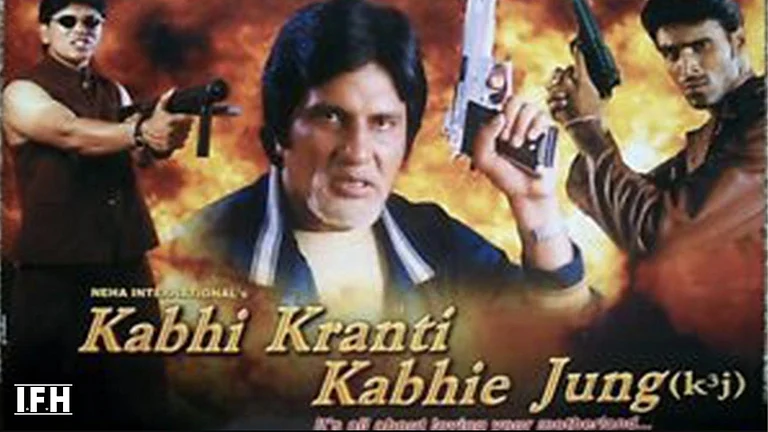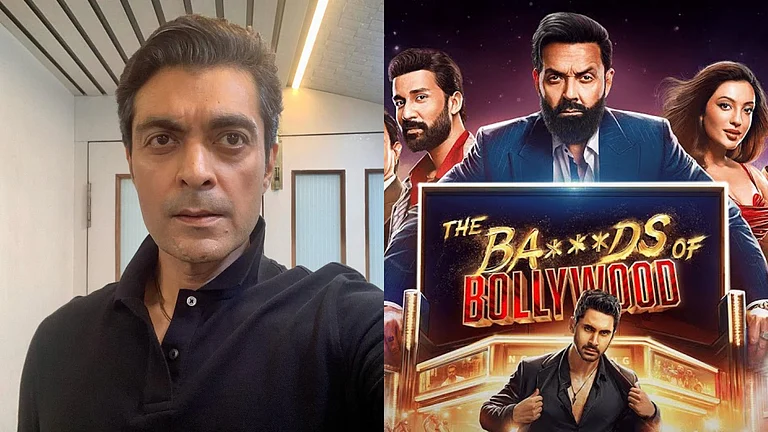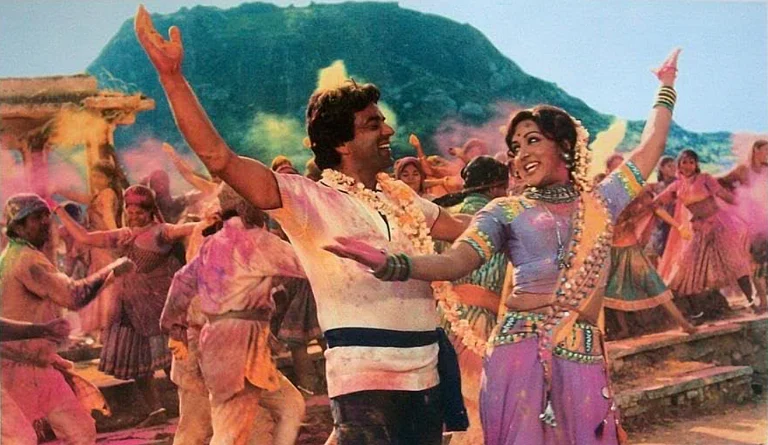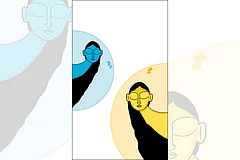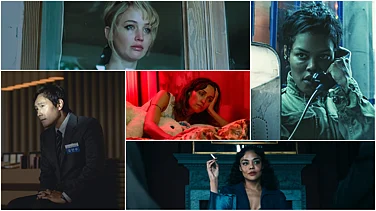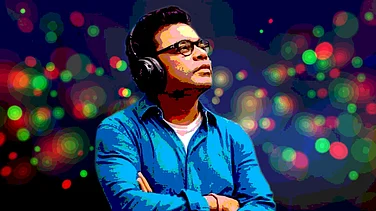Towards the end of The Lunchbox (2013), Saajan Fernandes (Irrfan Khan), a widower, gets ready for a date. It’s an unlikely romance, an old-school romance: He and Ila (Nimrat Kaur) have never met; she sends him food to his office every day; they confide in each other through long letters. On the morning of his date though, when Saajan goes to the bathroom, he finds “it smelled the same, exactly the same after my grandfather had been in the shower,” he tells her later. It was the “smell of an old man”. “I don’t know when I became old—maybe it was that morning, maybe it was many mornings ago.” He reaches the restaurant and sees Ila: fidgety, pretty, young. Saajan wants to meet her, talk to her, but he turns around and leaves. “No one buys yesterday’s lottery ticket, Ila. You’re young; you can dream. And for some time, you let me in your dreams. I wanted to thank you for that.”
Shaped by his society and time, Saajan describes old age in the way it’s portrayed in popular culture and internalised in life: a period that signals regress not progress, underpins deprivation not desire, prizes sacrifice not self. Cinema, too, has favoured and fetishised the young: their bodies, their minds, their pursuits—it’s a universal truth, an ageless monopoly. The actors must be young even if their characters are not, especially if they’re women. Consider Mother India (1957), where Nargis plays a moral and sacrificial mother, a trailblazing role that’d define motherhood—and, by extension, feminine old age—in Hindi cinema. Nargis hadn’t even turned 30 when the movie hit the theatres. Less than five months later, she married Sunil Dutt, an actor who played her son in the film.
Two decades later, Bollywood had a new star, Amitabh Bachchan, the Angry Young Man who, like his postcolonial country, lacks a father and dotes on his mother. She’s poor and oppressed, virtuous and sacrificial—an embodiment of (stereotypical) old age. Bachchan, the son, and Nirupa Roy, the mother, appeared in many such dramas. Their age difference? Twelve years. Ageism in Hindi cinema, in fact, finds distinct echoes in Bachchan’s on-screen mothers: As the Angry Young Man got older, his mothers got younger. Here’s a small sample: Trishul (1978), Bachchan, 36 years, Waheeda Rehman, 40; Shakti (1982), Bachchan, 40, Rakhee, 35; Agneepath (1990), Bachchan, 48, Rohini Hattangadi, 35. Such examples have continued to persist. Most recent? Jawan (which literally means young): Shah Rukh Khan, 57; Ridhi Dogra, 39.
Age is not just a number; it’s also a language. It communicates who should do what—and when. It’s even more applicable to cinema which, for a very long time, has dictated the definitions of beauty, propriety, and normalcy. And, at times, this messaging is not covert but overt. In 1984, a Filmfare cover was bold (and shameless) enough to ask: “She’s 30. Where does Rekha go from here?”
Early Hollywood, on the other hand, operated in an insidious mode: It demonised old age. And it did so with a flourish so smooth and so meta—using appropriate actors and plots—that it became near-impossible to separate fact from fiction, derision from empathy. Take Sunset Boulevard (1950), pivoted on a has-been star hoping for a comeback, played by Gloria Swanson, 51, a... has-been star hoping for a comeback. An excellent drama about an actress’ failing relationship with time, its ageing heroine craving spotlight—via exaggerated physical acting—made her a credible figure of ridicule and horror. An old actress pining for respect and fame? Transgressive and horrific indeed.
Bollywood actresses have begun to highlight the problem, using their own examples when they had to play mothers to older actors or were replaced by starlets in the remakes of their songs.
In the next decade, another feted film, Whatever Happened to Baby Jane? (1962), raised the stakes. It featured not one but two old women (Joan Crawford and Betty Davis, both in their 50s)—playing stars way past their prime—who, much like their characters, were engaged in a decades-long feud in real life. Unlike Sunset Boulevard, this drama was a literal horror, and its implications about age much sharper and direct: that Hollywood would only tolerate an old performer if she embodied ridicule and threat. “These actresses who had been previously cast partly because of their beauty,” writes Sally Chivers in The Silvering Screen: Old Age and Disability in Cinema (2011), “contributed to the horror evoked by their deviance from the very norm the casting of their own physical forms had set.”
Hollywood loved the idea so much that it spawned a sub-genre, called psycho-biddy, comprising dozens of movies, flourishing till the mid-70s. They featured once glamorous—but now old, unhinged—actresses terrorising those around her. It wasn’t enough that Hollywood feared (and loathed) old actresses; it had to monetise their anxieties and misfortunes, too. Before cinema though, fairy tales—relying on ageism and sexism—vilified old women as witches in Snow White, Hansel and Gretel, Rapunzel, and many others.
Popular Hindi cinema often derives inspiration from mythological texts, which help understand the depictions of old characters in Bollywood. Dividing a Hindu’s life in four phases— brahmcharya (bachelor), grihstha (householder), vanprasth (forest dweller), and sanyas (ascetic)—they assign fixed responsibilities to each (almost like a ‘temporal caste system’) where the final two stages, after the age of 50, are devoid of desire. No wonder, then, that many old characters in Hindi dramas have played passive roles—living more for their children than for themselves—showing a distinct lack of inner-life, personality, and drive. Many movies also frame old age as ‘disability’—marked by debilitating diseases (most notably Alzheimer’s)—which, according to neurologist George Beard, also represents the fallacious “moral and intellectual deterioration”.
Films have often cast old people in two broad moulds: crabby, whiny, angry (doubling up as upholders of sanskaar) or silly, playful, over-the-top (overcompensating as flirtatious). Both portrayals seem ‘extra’, straining to find theatrical types. Bachchan’s Piku (2015), Pink (2016), and Gulabo Sitabo (2020) underscored the ‘Grumpy Old Man’, while Veer-Zaara (2004), Kabhi Alvida Naa Kehna (2006), and Bbuddah...Hoga Terra Baap (2011) tripped on glad-eyed gabs. Remember the psycho-biddy genre in Hollywood? Well, it had a counterpart, too. “The use of older stars in the camp comedic context of the 1960s [which continued well into the ’80s, ’90s, and aughts],” write Timothy Shary and Nancy McVittie in Fade to Grey: Aging in American Cinema (2016), “demonstrated one final way of deflecting anxieties about aging: dehumanizing the aged on screen by transforming them into two-dimensional objects of kitsch to be laughed at.”
Bollywood actresses have begun to highlight the problem, using their own examples (when they had to play mothers to older actors or were replaced by starlets in the remakes of their songs), from Sharmila Tagore to Madhuri Dixit to Shefali Shah. Many Hollywood stars, too, have shared the joys of ageing, such as Halle Berry, Kate Winslet, and Helen Mirren (who graced the cover of People magazine in 2022). If the actresses have to remind the world—again and again—that there’s nothing wrong with their bodies, then the world has come to their male counterparts, as movie studios obsess over recognisable brands to sell tickets. In Hollywood, Harrison Ford, 80, helmed Indiana Jones and the Dial of Destiny (2023). Sylvester Stallone, 77, will reprise his role in the remake of Cliffhanger (1993). Arnold Schwarzenegger, 76, will return in the action thriller Breakout. Back in Bollywood, which suffers from a paucity of young stars, Shah Rukh Khan has reinvented himself as a ‘sexy’ action hero. Akshay Kumar and Salman Khan, too, have continued to thrive (despite their many duds). As if they all are living versions of Benjamin Button: ageing in reverse.
But a distinct change has marked Bollywood movies in recent years, as they probe the different dimensions of old age, moving beyond ailing bodies, passive caregivers, and sanskaari specimens, seeing them instead as complex wholes, individuals who fall in (and out of) love, talk about lust, regret, rebel, dream. Over a dozen such dramas have released in the last decade—several of them well made, such as Piku (2015), Badhai Ho (2018), Aise Hee (2019)—defanging a tired cliché. It’s also given Bollywood directors new—and newer ways to tell—stories. Films with fresh takes on familial bonds (Mukti Bhawan, Gulmohar, Goldfish); perilous and endearing romance (The Threshold, Aise Hee, Rocky Rani Aur Kii Prem Kahani), and assertions of lust (Lipstick Under My Burkha and Lust Stories 2).
MORE FROM THIS ISSUE
This change has also given (much deserved) due to excellent performers, such as Shefali Shah, Ratna Pathak Shah, and Neena Gupta (who, in 2017, had to write an Instagram post, asking for work). It’s also told Bollywood filmmakers what can happen if they remove their blinkers—controlled by suffocating definitions of desirability, age, and stardom—and open themselves to the complexities and ambiguities of real life. Ditto Hollywood, which has seen striking performances—and Oscar wins—in the last few years: Anthony Hopkins (Best Actor for The Father (2020), making him, at 83, the oldest actor to win the honour), Frances McDormand (Best Actress for Nomadland (2021)), Jamie Lee Curtis (Best Supporting Actress for Everything Everywhere All At Once (2022)). Such exemplars of hope can be best summarised in a dialogue by Dharmendra in Johnny Gaddar (2008)—and, given that ageism is universal, it makes perfect sense that Harrison Ford had said something similar in Raiders of the Lost Ark (1981)—“It’s not the age; it’s the mileage.”
(This appeared in the print as 'Age-old Formula')







